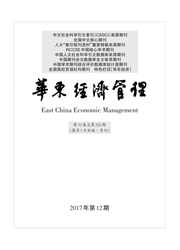

 中文摘要:
中文摘要:
文章借助长期能源规划软件LEAP软件,采用定量分析和定性分析相结合的方法模拟四种基本情景下我国钢铁产业的能源消费总量和CO2排放总量。模拟结果表明,第一,在影响碳排放的诸因素中,粗钢产量的增加是导致CO2排放量增加的主要因素,而能源效率的提高是CO2排放强度降低的重要因素;第二,中长期来看,我国铜铁产业仍然有相当的碳减排潜力,且实现钢铁产业减排的主要途径是产业结构调整和技术进步。这将有助于更加全面地认识我国钢铁产业未来节能减排的方向,同时可以为我国相关政策部门制定钢铁产业的相关政策提供切实可行的依据。
 英文摘要:
英文摘要:
This paper utilizes long-range energy alternatives planning system (LEAP) software to simulate the total energy consumption and carbon dioxide emission in four basic scenarios through quantitative and qualitative analyses. The results show that, firstly, the increase of the crude steel output is the major factor which causes the increase of carbon dioxide emis- sion, the improvement of energy efficiency leads to the decrease of carbon dioxide emission; secondly, there is a relatively great potential tor China's iron & steel industry to reduce its carbon dioxide emission in the long run, and reaching the emis- sion target of iron & steel industry is based on industry structure adjustment and technical improvement. It will be helpful for us to be fully aware of the future direction of energy saving and emission reduction for China's steel & steel industry. Meanwhile, it also provides practical basis for China's relevant policy-making sectors to enact realistic policies on the steel & iron industry.
 同期刊论文项目
同期刊论文项目
 同项目期刊论文
同项目期刊论文
 期刊信息
期刊信息
